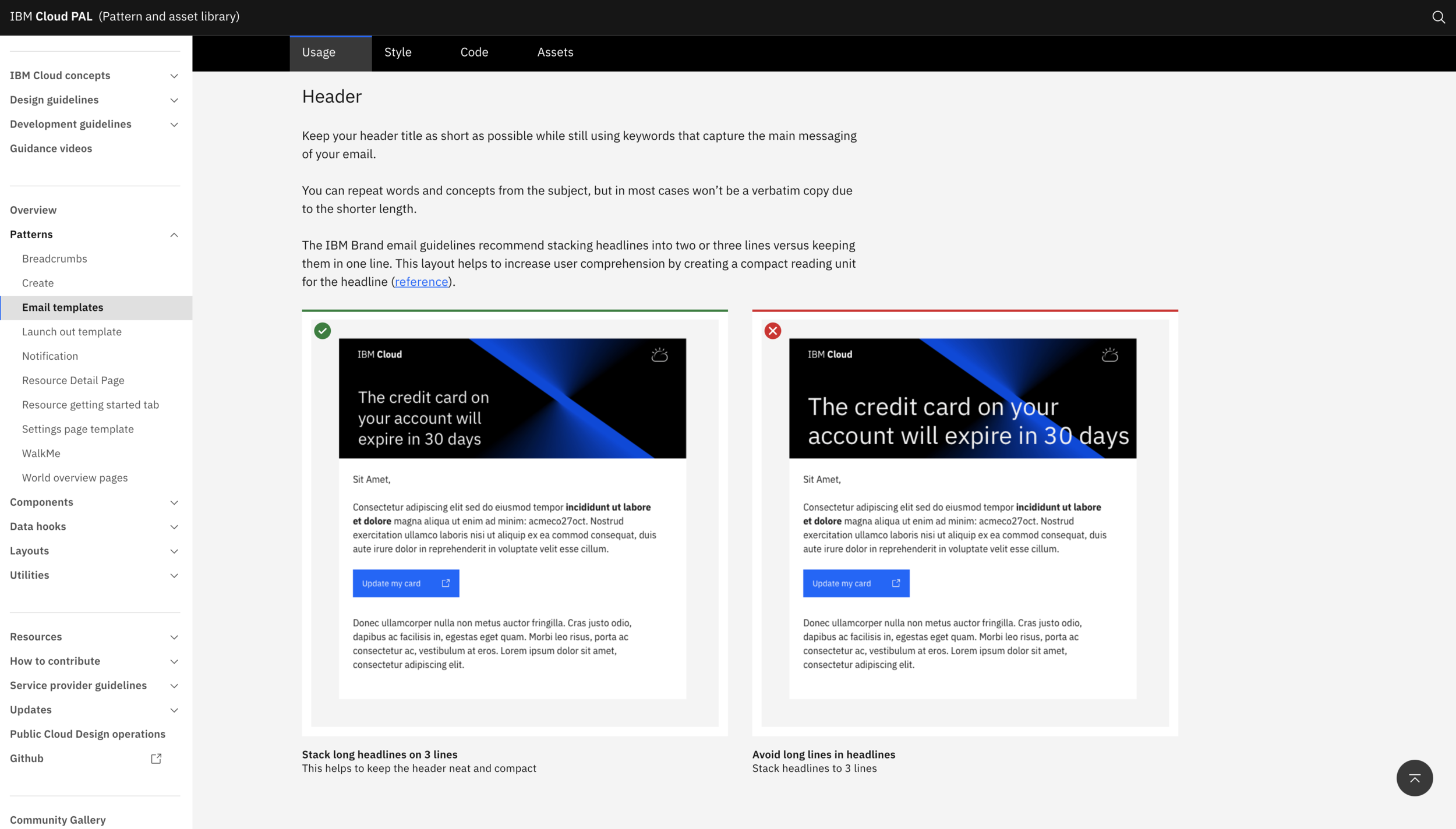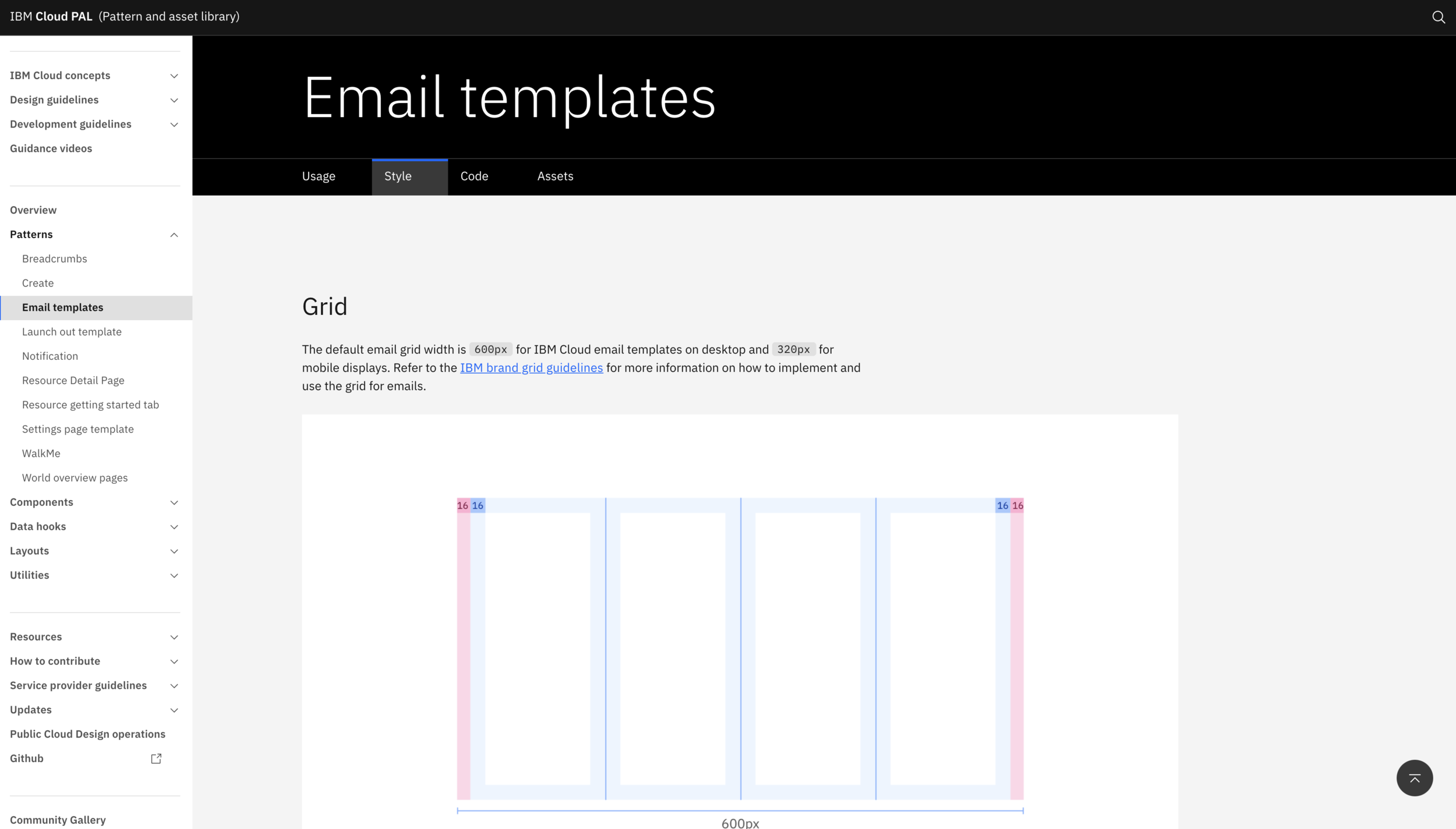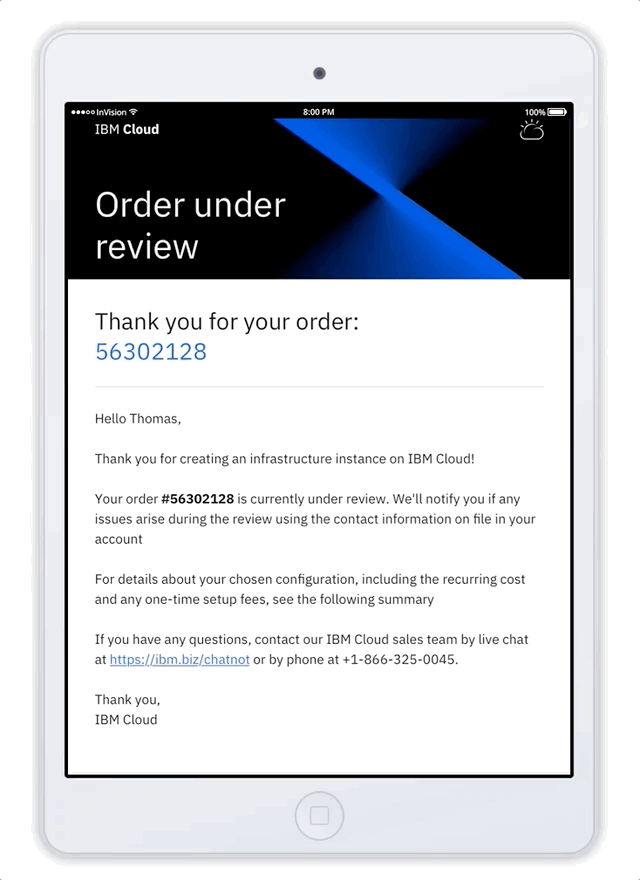Timeframe
Summer 2020 — Winter 2021
Role
Lead UX designer
Visual designer
UX guidance writer
Skills
Visual design
Email and content design
UX design
Deliverables
Hi-fidelity designs email templates
Sketch library
UX and content guidance
IBM Cloud - you’ve got mail
"Too many emails" has been a top user pain point for years, spamming inboxes and negatively affecting the perception of IBM Cloud stability. On average, IBM Cloud users would receive anywhere from a few dozen emails a day. The emails range from the anytime a person creates an account, receives a reminder about an upcoming bill, or is notified of high-impact maintenance disruption.
The challenge and problem space
When I joined this project, there was no central team responsible for managing email communication. Multiple teams used different templates and tools to send out emails, causing both visual and content inconsistency. There were very few standards to ensure the content, designs, quantity, frequency, and quality of our emails. As a result, customers end up getting bombarded by marketing, support & notification emails from a variety of sources. This negatively impacted Net Promoter Score and created distrust in our clients.
The solution:
The end goal was to build a single microservice that would send all outgoing emails that various teams could use. In our efforts to streamline this process and create a consistent experience, I designed a series of reusable templates teams adopted that:
Standardized email content in both voice and tone to reflect consistent messaging
Adhered to the IBM brand and design language to establish brand integrity
Responsive on both mobile and desktop while
Get to the gist of what an email is about. Within 10 seconds of opening an email, a user could understand if any immediate action on their part is needed.
Flexible and modular components to handle different use cases
The end results were a Sketch library and components design teams could adopt and design/implementation guidance for teams.

Reusable templates for teams

Best practices and UX guidance

Responsive, flexible grid





